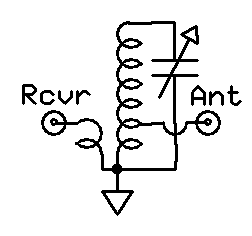Preselector
Preselector
A preselector is a type of gearbox used in automobiles and other machinery. It allows the driver to "pre-select" the next gear before it is actually needed. This type of gearbox was particularly popular in the early to mid-20th century, especially in luxury cars and buses.
History[edit | edit source]
The preselector gearbox was first developed in the early 20th century. It gained popularity in the 1930s and 1940s, particularly in British and European cars. Notable manufacturers that used preselector gearboxes include Daimler, Alvis, and Lagonda.
Mechanism[edit | edit source]
The preselector gearbox operates using a combination of clutches and bands to engage the desired gear. The driver uses a small lever or a pedal to select the next gear in advance. When the driver is ready to change gears, they simply press a pedal or move a lever, and the preselected gear is engaged. This system allows for smoother and quicker gear changes compared to traditional manual transmissions.
Advantages[edit | edit source]
One of the main advantages of the preselector gearbox is the ease of use. It requires less effort from the driver to change gears, making it particularly useful in heavy traffic or for drivers who may have difficulty with a traditional manual gearbox. Additionally, the preselector gearbox can provide smoother gear changes, which can enhance the driving experience.
Applications[edit | edit source]
Preselector gearboxes were commonly used in luxury cars, buses, and some military vehicles. They were particularly favored in vehicles where smooth and effortless gear changes were important. Although they have largely been replaced by modern automatic transmissions and semi-automatic transmissions, preselector gearboxes are still of interest to vintage car enthusiasts and collectors.
Notable Models[edit | edit source]
Some notable car models that featured preselector gearboxes include:
Decline and Legacy[edit | edit source]
The use of preselector gearboxes declined with the advent of more advanced automatic and semi-automatic transmissions. However, they remain an important part of automotive history and are still appreciated by enthusiasts for their unique mechanism and driving experience.
See Also[edit | edit source]
References[edit | edit source]
External Links[edit | edit source]
This article is a automobile-related stub. You can help WikiMD by expanding it!
Search WikiMD
Ad.Tired of being Overweight? Try W8MD's physician weight loss program.
Semaglutide (Ozempic / Wegovy and Tirzepatide (Mounjaro / Zepbound) available.
Advertise on WikiMD
|
WikiMD's Wellness Encyclopedia |
| Let Food Be Thy Medicine Medicine Thy Food - Hippocrates |
Translate this page: - East Asian
中文,
日本,
한국어,
South Asian
हिन्दी,
தமிழ்,
తెలుగు,
Urdu,
ಕನ್ನಡ,
Southeast Asian
Indonesian,
Vietnamese,
Thai,
မြန်မာဘာသာ,
বাংলা
European
español,
Deutsch,
français,
Greek,
português do Brasil,
polski,
română,
русский,
Nederlands,
norsk,
svenska,
suomi,
Italian
Middle Eastern & African
عربى,
Turkish,
Persian,
Hebrew,
Afrikaans,
isiZulu,
Kiswahili,
Other
Bulgarian,
Hungarian,
Czech,
Swedish,
മലയാളം,
मराठी,
ਪੰਜਾਬੀ,
ગુજરાતી,
Portuguese,
Ukrainian
Medical Disclaimer: WikiMD is not a substitute for professional medical advice. The information on WikiMD is provided as an information resource only, may be incorrect, outdated or misleading, and is not to be used or relied on for any diagnostic or treatment purposes. Please consult your health care provider before making any healthcare decisions or for guidance about a specific medical condition. WikiMD expressly disclaims responsibility, and shall have no liability, for any damages, loss, injury, or liability whatsoever suffered as a result of your reliance on the information contained in this site. By visiting this site you agree to the foregoing terms and conditions, which may from time to time be changed or supplemented by WikiMD. If you do not agree to the foregoing terms and conditions, you should not enter or use this site. See full disclaimer.
Credits:Most images are courtesy of Wikimedia commons, and templates, categories Wikipedia, licensed under CC BY SA or similar.
Contributors: Prab R. Tumpati, MD

